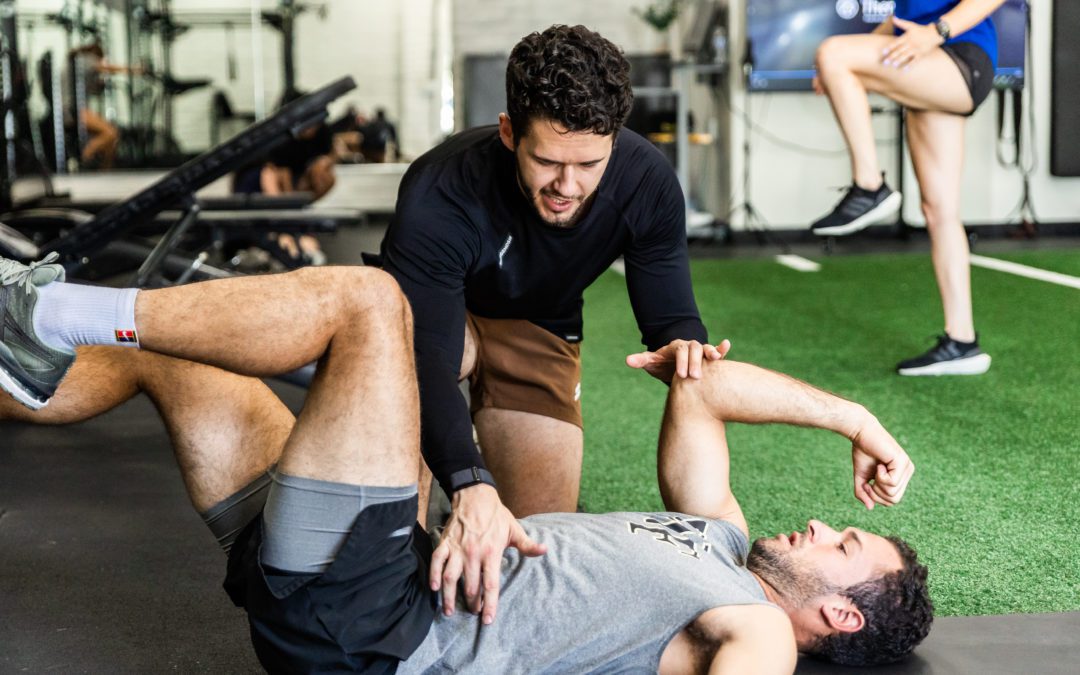Table of Contents
Now this isn’t a rant on why I don’t like crunches or why crunches can be bad. It just may not be one of the best core exercises for you.
In reality multiple research papers find no inherent issue with crunches when it comes down to core exercises. Rather I simply want to address the elephant in the room: you won’t get a six-pack by just doing crunches. Most people will have to drop tons of body fat to just see the appearance of abs and have to change your workouts to more hypertrophy-based training to see those blocks. I’ll admit myself that the best I’ve ever seen has been a 4-pack and the lowest body fat I’ve ever been at was 11%.
Was it fun to push my body that way? A bit.
Was it sustainable? Not likely.
Most people are not trying to obtain a level of high-sports performance nor elite, stage-ready bodybuilding physiques. So if your posture during the majority of the day revolves around you behind a desk or computer, performing another flexion core exercise may not be the best for your health nor performance. This is why I’m breaking down my top eight minimal-equipment core exercises you should be doing instead of crunches.
https://www.instagram.com/p/CCCMnzoDCGq/?utm_source=ig_web_copy_link
My 8 Core Exercises
1) Front Plank – It’s simple and time tested core exercise. Focus on tucking in your hips and pushing your forearms away from your body and into the ground. Most of these exercises are based on the foundation that “proximal stability promotes distal mobility” – Michael Boyle.
2) Plank Reaches – The addition of a reach now forces the body to focus on anti-rotation. Approach this core exerise with a wider stance and slightly higher hip position. No need to reach high – focus on reaching far out.
3) Dog-Bird Plank – Not a beginner core exercise: Moving across the body (opposing limbs) is how our body is designed to move and operate. The focus again is anti-rotation with more stiffness developed in your low and mid-back.
4) Body Saw – Now that you’ve got proximal stability, it’s time to start working on your anterior serratus (a muscle group located just above your ribs and plays a big role in shoulder health and posture). You can use a slider, or a towel to perform the motion. Focus on moving more backwards than forwards. The further you are from your elbows, the harder it is.
5) Ipsilateral Deadbug – Moving your limbs on the same side takes mental effort as a core exercise. Initially you might hit some brain fog, but work out the kinks. As with all deadbug core exercises, focus on pushing your low back into the ground and brace your body. In case you need help with that, imagine preparing to take a hook to your stomach.
6) Contralateral Deadbug – With deadbugs, it’s sometimes about moving less than pushing your limits. Moving with opposing limbs now forces your body to stay tight and not develop “energy leaks” (a post for another time).
7) Hallow Body – In the example I show, I have my arms overhead. This core exercise is designed for you to stay tight in an extended position. Initially you can have your arms to your side and knees slightly bent. As you practice it more often, you can move your arms further overhead and legs lower to the ground.
8) Hallow Body Rocker – This is the top of the mountain, the cream of the crop, of this core exercise rundown. By moving and holding the hallow body position, you’re able to stay stable and strong while shifting internal pressure. Start with small rocking motions before adding bigger rocks or holding it for longer times.
This core exercise rundown are alternatives to crunches. Heck some of these movements might light a fire in your core and get you to develop some actual abs on top of a strong core. These core exercises also have a huge transfer to bigger motions like squats, deadlifts, Olympic movements, running, jumping, and throwing. Your core exercises should be functional – not rudimentary.
To read more about my take on fitness related-topics, like core exercises, check out my press page.

